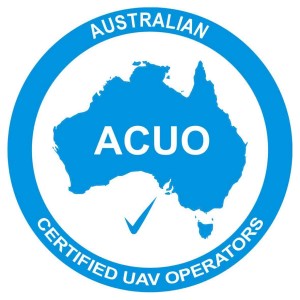 The Australian Certified UAV Operators Inc. (ACUO) reported this weekend that the Australian Civil Aviation Safety Authority (CASA, basically the Australian equivalent of the FAA) has now certified more than 100 commercial UAV operators. To accompany the announcement of the milestone, the ACUO also published a report outlining exactly who has been obtaining government permission to fly, supplying the FAA with some valuable ‘lessons learned,’ should they choose to listen.
The Australian Certified UAV Operators Inc. (ACUO) reported this weekend that the Australian Civil Aviation Safety Authority (CASA, basically the Australian equivalent of the FAA) has now certified more than 100 commercial UAV operators. To accompany the announcement of the milestone, the ACUO also published a report outlining exactly who has been obtaining government permission to fly, supplying the FAA with some valuable ‘lessons learned,’ should they choose to listen.
The findings provide a key under-the-hood look at the commercial drone movement, and further demonstrate the necessity for commercial UAS to take flight in the U.S, lest we miss out on the economic benefits inherent in such a paradigm-shifting technology.
The two key findings of ACUO’s analysis are:
1) The industry is dominated by micro and small businesses, rather than traditional aerospace and defence sector multinationals.
2) There is a strong pattern of certification of new-starts in regional Australia with this projected to expand in support of mining and agriculture, with positive employment impacts.As can be seen from the chart, 91 of the certificates for UAS operation granted by the CASA were to small start-ups.
Said ACUO President Joe Urli, “The message to public policy makers that flows from these facts is very clear: the unmanned aircraft industry as it is developing in Australia is purely commercially driven in its focus and should not be treated as simply an extension of the traditional aerospace and defence industrial bases.”
The concept of UAS as a commercial enterprise rather than an extension of aerospace and military applications appears to be slightly lost on the FAA (as can be seen in their Roadmap to UAS Integration) and the American public as a whole (no thanks to Catelyn Stark).
While we are on the topic of concepts Urli seems to get but the FAA has yet to grasp; “the immediate supplier base is clearly defined by a bottom up approach, rather than top down. This is unlikely to change even when the regulations do broaden, because the market dimensions are unlikely to provide many opportunities for larger systems… The overall dominance of micro and small companies will continue unabated.”
Due to the lack of regulations in the U.S. and the resulting ad-hoc rules of the FAA, the domestic drone community is stuck in a top down paradigm of supply/airspace access which is stifling UAS innovation where it is needed most: implementation.
Let’s look at another graph from the study.
It would be unfair to say the FAA hasn’t granted more COAs in the last 6 months than it did in 2013, but a report on their numbers wouldn’t look this pretty.
“We see this sudden surge as indicative of a pent-up demand that will only increase, particularly given the broad market space
available to start-ups,” says Urli.
Urli also identifies the the two early adopter industries as mining and agriculture.
You can read the findings of the study in their entirety in the press release, but we want to leave you with one final observation the Aussies have made that has yet to catch on here in the states:
Rather than any industry specific use for drones, Urli says, “the continual market lesson being learnt by certificated operators is that unmanned aircraft have a closer parallel to the laptop computer.”
This is what is at stake. We have said it before: the drone movement in the U.S. mirrors the rise of the PC more than any other recent technological advancement. There is still a lot of untapped potential in UAS, but on our current trajectory, we will miss a lot of economic and technological opportunities.
Alan is serial entrepreneur, active angel investor, and a drone enthusiast. He co-founded DRONELIFE.com to address the emerging commercial market for drones and drone technology. Prior to DRONELIFE.com, Alan co-founded Where.com, ThinkingScreen Media, and Nurse.com. Recently, Alan has co-founded Crowditz.com, a leader in Equity Crowdfunding Data, Analytics, and Insights. Alan can be reached at alan(at)dronelife.com







Leave a Reply